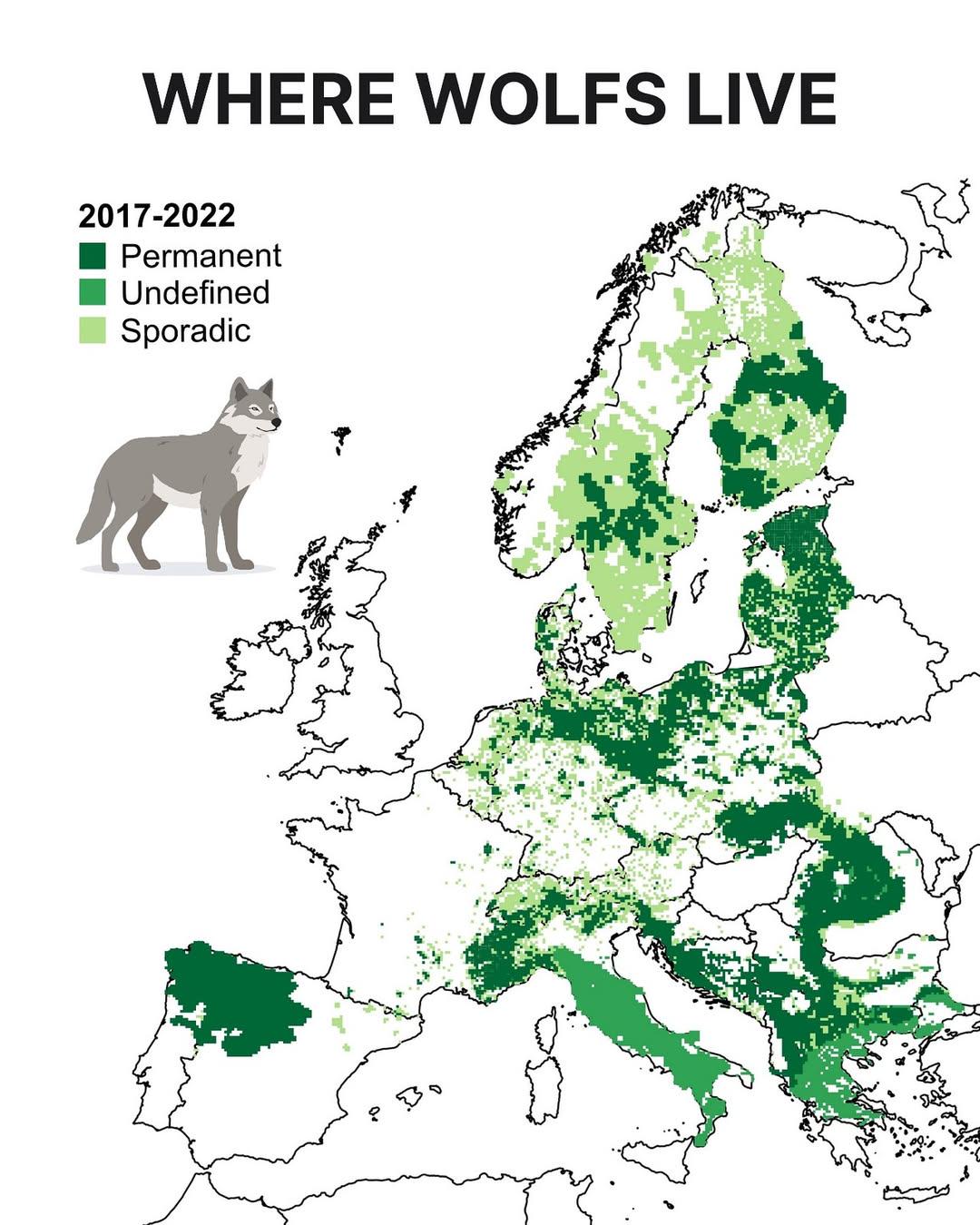

David Chen
Data Visualization Specialist
David Chen is an expert in transforming complex geographic datasets into compelling visual narratives. He combines his background in computer science ...
Geographic Analysis
What This Map Shows
The "Where Wolves Live in Europe" map provides a detailed visual representation of the current distribution of wolf populations across the continent. It highlights both the areas where wolves are thriving and those where their presence is minimal or absent. The map showcases the various habitats that support wolf populations, along with the regions facing challenges in conservation efforts. It’s an essential tool for understanding the ecological dynamics of wolves and their geographical needs.
Deep Dive into Wolves in Europe
Wolves, scientifically known as Canis lupus, are fascinating creatures that have adapted to a variety of environments across Europe. Historically, wolves roamed freely across the continent, but their populations have fluctuated significantly due to hunting, habitat loss, and human encroachment. Today, European wolves primarily inhabit forested regions, mountains, and remote rural areas, where they can find sufficient prey and maintain their social structures.
Interestingly, wolves are highly social animals that live in packs, usually consisting of a breeding pair and their offspring. This pack structure is vital for their survival as it allows them to effectively hunt larger prey, such as deer and wild boar, which are abundant in many parts of Europe. For instance, regions like the Carpathian Mountains in Eastern Europe support robust wolf populations due to the availability of prey and suitable territory.
The map also indicates areas where wolves are making a comeback, such as parts of Italy, Germany, and Scandinavia. In these regions, conservation efforts and legal protections have contributed to the resurgence of wolf populations. In contrast, other areas, particularly in Southern Europe, face ongoing challenges due to habitat fragmentation and conflicts with livestock farming.
According to estimates, the current population of wolves in Europe is around 12,000 to 16,000 individuals, though this number can vary based on seasonal changes and regional conservation efforts. Countries like Romania and Poland are known to have some of the highest wolf densities, while countries in Western Europe, such as France and Spain, are still seeing gradual increases in their wolf populations following years of decline.
Regional Analysis
When examining the map, it becomes clear that wolf distribution in Europe is not uniform. In Northern Europe, particularly in Scandinavia, wolves exist in higher densities, benefiting from vast wilderness areas and fewer human disturbances. The Swedish and Finnish forests provide ample space for hunting and breeding, allowing for a stable population of wolves.
Conversely, Southern Europe presents a different picture. In countries like Portugal and Spain, wolves are mostly confined to specific regions, particularly in the rugged mountains where human activity is less intensive. The Iberian wolf, a subspecies found in this area, faces significant threats from habitat loss and hunting, leading to a critical conservation status.
Eastern Europe, particularly the Balkan regions, showcases a mix of thriving and struggling wolf populations. Countries like Bulgaria and Serbia have seen some successful conservation initiatives, yet conflicts with farmers remain a persistent issue. In these areas, wolves often prey on livestock, leading to retaliatory killings and further endangering their populations.
Significance and Impact
Understanding the distribution of wolves in Europe is crucial for biodiversity conservation and ecosystem health. Wolves play a pivotal role as apex predators, helping to maintain the balance of prey populations and promoting healthy ecosystems. Their presence influences the behavior of herbivores, which can lead to increased vegetation growth and enhanced biodiversity in their habitats.
However, the ongoing conflicts between wolves and livestock farmers raise critical questions about coexistence. As human populations expand and encroach on natural habitats, finding balanced solutions becomes more important than ever. Conservationists are advocating for better management practices, such as implementing compensation programs for livestock losses and promoting awareness about the ecological benefits of wolves.
Interestingly, public perception of wolves has evolved over time. While they were once seen primarily as threats to livestock and human safety, many now recognize their ecological importance. As awareness grows, so too do opportunities for sustainable coexistence. With ongoing conservation efforts, wolves may continue to reclaim their rightful place within Europe’s diverse ecosystems, shaping the landscape for generations to come.
Comments
Loading comments...